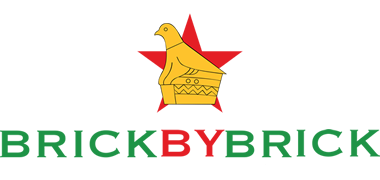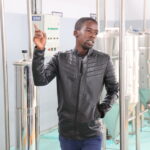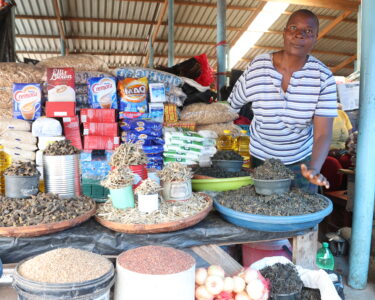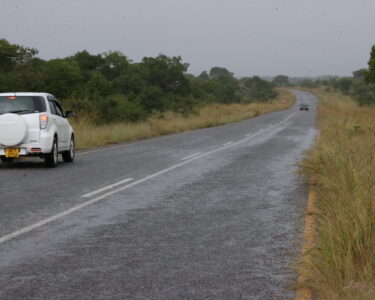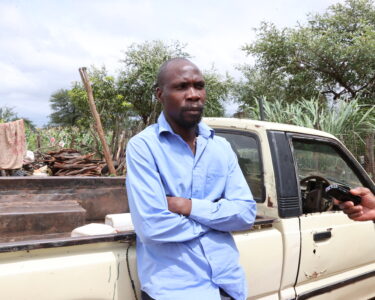… First year operation shows dramatic results
The good news in Masvingo Province appears to have no end. Almost 149 km south of Masvingo city is Rutenga, the location of the first ever mapfura wine factory in the country set up by the National Biotechnology Authority in late 2021. The first year’s results are so dramatic that Zimbabwe, as a nation, may want to take mapfura wine-making as a serious business. Baffour Ankomah reports.
“Wine is to France what maize is to Zimbabwe. But Zimbabwe can become a massive wine-producing country like France, or even like what South Africa has tried to do from its Stellenbosch wine fields.” This was the view we left behind at Rutenga in the Mwenezi District of Masvingo Province when we visited the National Biotechnology Authority’s Mapfura/Marula Industrial Park where wine is made from the mapfura (or marula) fruit.
We had gone there as a team of Brick by Brick editors travelling up and down the Masvingo Province inspecting what the province has achieved under the Second Republic. And what surprise awaited us.
In the end, we concluded that, if Zimbabwe, as a nation, pulls itself together and takes mapfura wine-making seriously, it will not only increase its GDP exponentially but also dramatically transform the lives of its people, especially those who live in the southern regions of the Masvingo Province right up to the environs of Bulawayo, as the mapfura tree grows in the wild expanse between the two places.
Currently what is described as an “industrial park” at Rutenga, where the National Biotechnology Authority’s mapfura wine factory is based, is a huge misnomer. The factory, commissioned by President Emmerson Mnangagwa on 25 October 2021, is too small for purpose as it was set up more on experimental basis. Nobody had done mapfura wine on commercial basis before, so information was sketchy before the factory was established. Everybody knew about the traditional mukumbi wine brewed from mapfura fruits, but that had always been done on a small-scale level.
From the history of the factory, it is clear that the National Biotechnology Authority embarked more or less on a fishing expedition when it set up the small factory at Rutenga, which proved in a few months’ time to be very inadequate for the purpose.
How it started
Noel Marimo, the factory’s young and confident plant engineer, tells the story better:
“The history of this place goes back to the traditional mukumbi wine brewed from mapfura by locals in the Rutenga area. Our R&D manager and CEO liked it, so the R&D manager came to Rutenga from Bulawayo where he was based to do a research and came up with different results. They then decided to commercialise the mapfura wine.
“The CEO and the R&D manager then went to Havana, Cuba, where Cuba rum is made. They wanted this project to empower the local community and industrialise the rural area.
“The President commissioned the factory on 25 October 2021, but it was during the mapfura offseason. Mapfura ripens in February, March, and early April. So the factory started to produce in February 2022.
“Prior to last season, our managers thought they could not get more than 17 tonnes of mapfura in this region, but to our surprise, last season we got 1,120 tonnes.
“The magnitude of the difference was too big, so much so that they had to go back to the drawing board in terms of the procurement of machinery, hiring of labour, everything had to change.
“We found that the machinery we had in the factory was small. The employment capacity was small. Everything which was put into the project was small. So it is something that we are trying to rectify this season.
“Worldwide, there is not much research on mapfura. Some of the information we have now, we are the first to get through our original research. It is a learning process. We are trying to learn each and every season. Last season we got certain challenges that we are trying to overcome this season. And this season we are encountering other challenges, so bit by bit we are learning.
“We have also discovered that this fruit is rich in a lot of things. When we pulp it, we separate the juice which we call the pulp. We peel the skin and get the fruit inside. The pulp is what we use to produce the wine. We can then pasteurise the pulp.
“Mapfura ripes in February, March and early April. So we try to gather as much fruit as possible. When we pulp it, we pasteurise it and keep the pulp throughout the year, so we can continuously brew wine throughout the year. What we try to do is to gather as much fruit as possible through the February-March-early April season.
Mapfura juice
“This season, our R&D Department has done prototypes of mapfura juice – maheu, etc – so we intend to open other production lines. The R&D manager says he has finished the prototypes, so if the managers agree on opening another production line, they are good to go.
“Also, inside the mapfura fruit is a seed or stone. Inside the stone are small seeds which we press to produce malula oil, which has high value. According to the guys at ZimTrade, the international market value of malula oil is 30 euros per litre. If we focus on it, we will not need to import Nivea lotions again. We can make our own lotions and other products. It has high content of oleic and lynoic acid (part of Omega-3 acids), which are very good for the skin. So it is a cosmetic oil.
“When we press those nuts to produce oil, there is a cake which is a by-product. That cake can now be used to make stock feed, especially for cows and donkeys. So now our factory is actually small, we will need a bigger place if we are to venture into all those things.
“For example, the mapfura fruit is such that you don’t throw any of it away. For example, when we crack the seeds, the kernels can be used to make charcoal. So we need a lot of equipment to use the entire raw material. I know we can work with local universities and polytechnics to produce the equipment, but we need funding. We also need to acquire a big piece of land for the factory because this place is now very small for what we envisage to do.
“But for now, we are focusing on pulping as much as possible to produce wine. We are waiting for a nut cracking machine, which should be here next week. We will start to crack the nuts and gather the small seeds inside to produce oil.
This season’s business
“From last season’s experience, the 1,120 tonnes we collected came from 900 local members that we registered, who came to the factory with fruits they had picked from the wild. Some of the trees are in their homesteads and farms and gardens.
“So they just picked from their own trees or went into the forests and picked the fruits. We graded the fruits, and paid 10 US cents per kg grade A, 8 cents grade B, and 6 cents grade C. Some of the people left here with a lot of money. Edson Nherera, a local man who lives not far from our factory, got US$3,000 from just picking the fruits.
“At peak last season, we employed 150 workers from the local community, and the majority were youths. Generally, this is a factory for youths. We are trying to empower them as much as possible. The youths here have issues of drugs and other things, principally because they are unemployed. So we are trying to help them by bringing an industry to their doorsteps, so that they can be gainfully employed and not go into drugs, etc.
Change in business practice
“This year, we are changing the way we buy fruits. Instead of pickers coming to us with fruits, we plan to go to them and buy the fruits in ward centres. There are 18 wards in this region, and we want to go to each ward centre with our trucks and collect the fruits from the pickers, to save them the trouble of transport and the associated costs of bringing the fruits to our factory as they did last year.
“One reason for the change is to preserve the quality of the fruits. So using our own trucks or hired trucks from locals, we can collect the fruits and also give business to local people who own trucks. We have already mapped out the 18 wards and registered the people.
“Last year, we paid pickers promptly, initially. But we had some issues of robberies here. So we changed the payment system. This year we have opened bank accounts for them, so we just put the money in their bank accounts every week. So there is no need for them to come here and collect their money.
“This year, we expect to enroll more than 900 people and cover the whole region. We got 900 people last year because they were the ones who were coming to us with their fruits.
“This year we are the ones going to them to collect the fruits, so we are expecting a bigger number of pickers this year throughout the 18 wards – it is a very large area that can give us thousands and thousands of tonnes of fruits. As such, this year we are trying to upgrade some of the equipment in the factory, so that when you come back to visit in 3 or 4 years’ time, this community will be totally different. If we really push to the expectation of what we are intending to do, it will be a very big industry.
Community response
“This project had much expectation from the community and we have been trying to meet that expectation. But we are facing some challenges since it is a new project. There is none like this project, so we are learning as we go along. The community members have accepted that each and every person is learning.
“Nherera, last season’s top picker, said last week that he couldn’t wait for the season to come back again. ‘I am now well prepared to bring you a lot of fruits,’ he told us. Those who are positively-minded, who want to gain from the project, have taken advantage of it. Each day people come here looking for a job.
“Last season, we had a challenge: Our machinery’s capacity did not correspond with the unexpected large fruit intake. Remember, we were hoping to collect only 17 tonnes of fruit for the whole season, but in the end we got 1,120 tonnes. So our machinery could not cope until we acquired new ones. In total, we managed to produce 100,000 litres of wine last season. We sold it locally. The people around here are the ones who appreciated the products.
“Feedback from them, which we now have, will help us to improve the quality before we go upmarket. This year, from March, we will start going upmarket. Last year we were using plastic packaging, which was cheaper. To go upmarket, we want to pack the wine in glass bottles. So we are expecting a delivery of glass bottles by March.
“It is likely that by the end of March, you will see our products in the upmarket supermarkets in the country. But in this region, we are now well known, so we want now to push the products to other parts of the country. Now that we have feedback from local consumes, it is easier to penetrate the upmarket shops.
“From analysing the wine, we now know that from 10 months onwards, it becomes perfect wine. So it is good that we didn’t rush into the upmarket shops before the wine was mature. At 10 months, the colour and the taste even become different. Our lab analysis has also been looking at the alcoholic content of the wine at 10 months. We are getting the results any time from now.
“We have seen how big this project can be. The challenge we face now is that we want to leapfrog to the extreme end. So if we can get assistance in acquiring proper equipment which can effectively use the entire raw material, it will do us a lot of good. Remember you don’t throw any part of the malula fruit away.”
As they say in England, the ball is now in the court of the authorities. This is a life-changing business for the people of the Masvingo Province and its neighbours.

